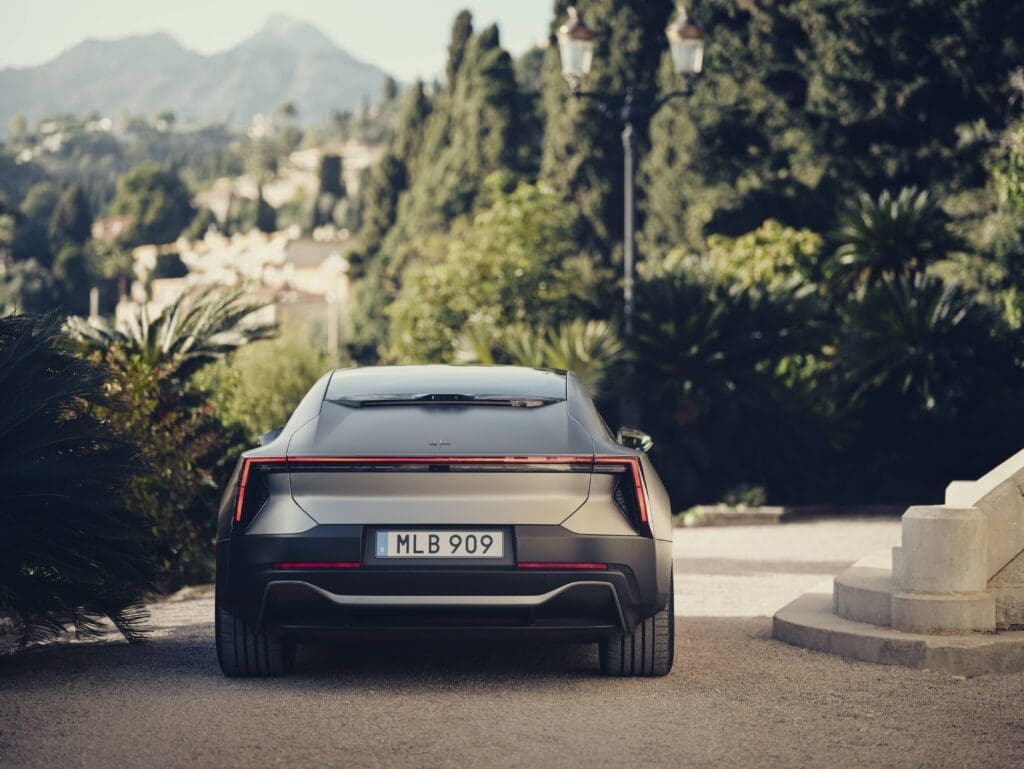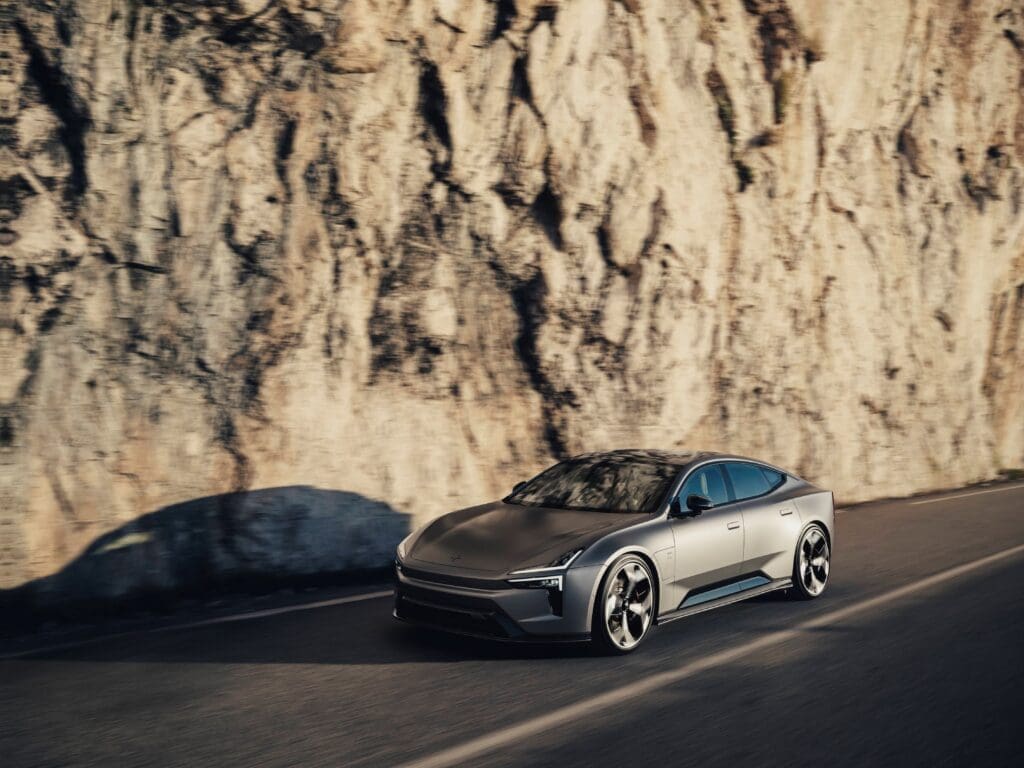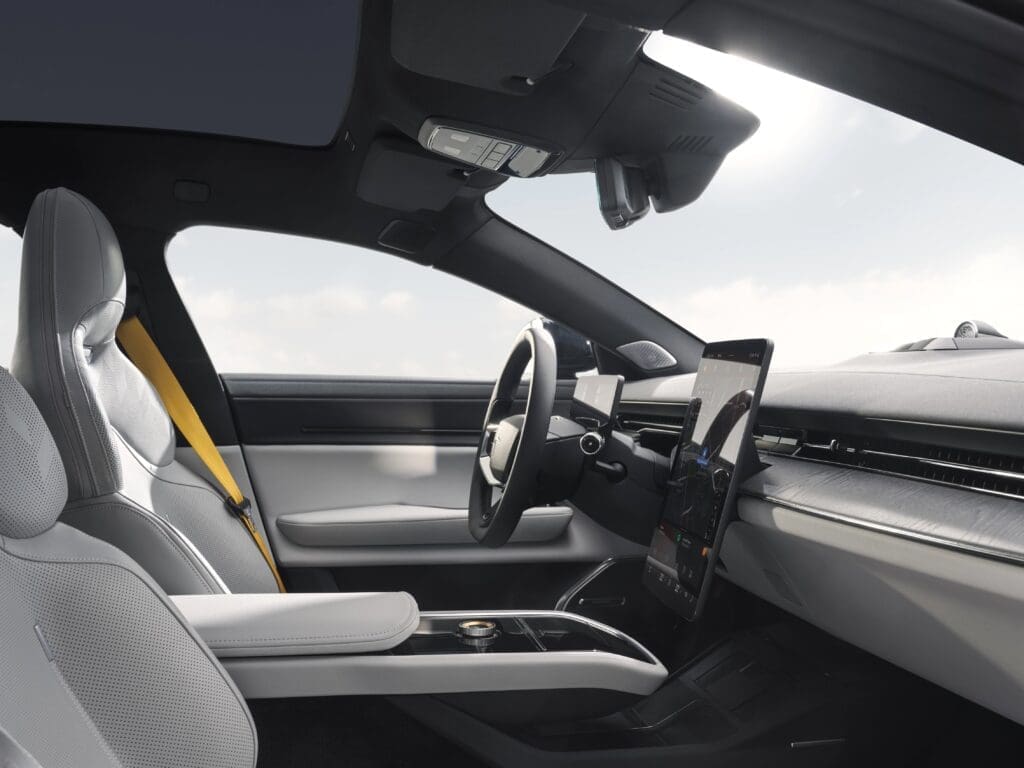When Polestar unveiled the Precept concept in 2020, it was meant as a manifesto. A promise that Scandinavian restraint, cutting-edge electrification, and sustainability could coexist in something desirable. Five years on, that promise takes physical form. The Polestar 5, a four-door performance Grand Tourer, is now a reality.
“Polestar 5 is bringing the future to our present. Our vision for Polestar’s design, technology, and sustainability direction is no longer a dream but a reality our customers can buy.”
Michael Lohscheller, Polestar CEO
A Design That Honors Its Origins
The Polestar 5 is nearly five meters long, yet it avoids the ornamentation often seen in luxury GTs. Its surfacing is taut, its proportions guided by aerodynamics rather than nostalgia. Aviation was a clear influence, the wing-like profile ending in a sharp Kamm-style tail. Frameless glass, flush handles, and an unbroken roofline all serve efficiency as much as aesthetics, resulting in a drag coefficient of 0.24.

Inside, Polestar has taken care to ensure the GT format does not sacrifice practicality. A panoramic roof stretches over two meters, and clever structural shifts allow generous rear space. The cabin design feels pared-back yet warm, defined by sustainable materials, flax-based composites, recycled PET, and leather sourced as a by-product of the food industry. It is a car that wears its conscience openly, without compromising on comfort.

Performance Engineering at the Core
Underpinning it all is the brand’s new bonded aluminum platform, purpose-built for the Polestar Performance Architecture. The result is a structure more rigid than some two-seat supercars. Lightness is paired with sophistication: compact double wishbone suspension up front, Brembo brakes saving weight over SUV counterparts, and adaptive MagneRide dampers in the Performance model.

Power is equally ambitious. The in-house developed rear motor delivers up to 450 kW on its own. In Dual Motor configuration, the car produces 550 kW and 812 Nm; the Performance version climbs to 650 kW and 1,015 Nm. Acceleration is appropriately brisk at 3.9 seconds for the Dual Motor, and 3.2s for the Performance. While both versions remain electronically limited to 250 km/h.
An 800 V architecture supports charging speeds up to 350 kW, bringing the battery from 10 to 80 percent in as little as 22 minutes. Range is quoted at up to 670 km (WLTP) for the Dual Motor and 565 km for the Performance.

A Cabin for Journeys
Where some performance cars can feel like a cockpit, the Polestar 5 remains true to its Grand Tourer brief. The Recaro-designed seats are both low and comfortable, with heating, ventilation, and massage available in both rows. The 4+1 layout favors four passengers, though the fifth seat can be raised when needed. Rear occupants even benefit from their own controls for climate and seat functions, an unusual level of attention in a performance-focused GT.
Technology is present, though not overwhelming. The 14.5-inch central display runs Android Automotive with Google built-in, while a slim driver display and head-up projection complete the driving interface. Audio can be upgraded to a 21-speaker Bowers & Wilkins system. Driver assistance includes 11 cameras, radar, and a suite of features capable of lane guidance and adaptive speed up to 150 km/h.

Polestar has never been shy about its intentions. The 5 isn’t simply another electric car; it’s a declaration of identity. By anchoring design, performance, and sustainability into one shape, it offers a different answer to the question of what a Grand Tourer should be in this era. Less about indulgence, more about intent.
Read more about cars here.